
 France – Treaty Light Cruiser 1828-1959
France – Treaty Light Cruiser 1828-1959
An innovative French cruiser
Named after a famous French naval engineer, Emile Bertin, this light cruiser innovated in the same way Algeria, marking a clear break for heavy cruisers.
In the interwar Germany was still the only country against which France imagined having to fight and there was a large-scale mining program considered to cripple the Kriegsmarine. A large-scale mining program at the time coul only be conducted by surface vessels, as submersibles such as the Saphir class were still in study (started in 1928). It was to meet that demand for modern, fast minelayer, that Pluton was launched, but it appeared quickly not as useful as intended. A more versatile ship was therefore considered, doubling as fleet cruiser. The Treaty of London limited construction of warships at the time, and decision was made on December 18, 1928, to built a “light minelayer cruiser of 5,980 tons Washington”. The equipment necessary for laying mines will be removable to convert her back as pure cruiser, but in the end, it will never be used.
*First republished on May, 3, 2016, original made back in 2004.
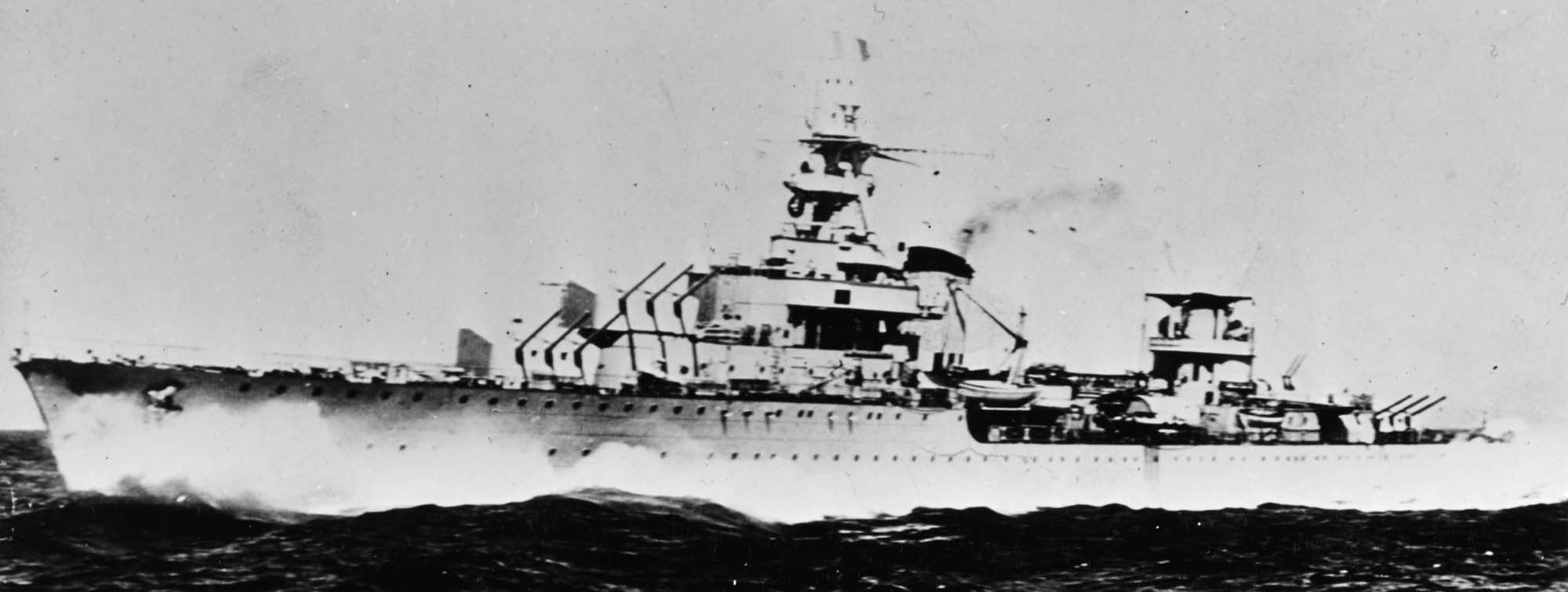
Basically, Emile Bertin was designed to support FS Pluto (later “La Tour d’Auvergne”) but it was soon decided to double her role as a flotilla leader. She was to conduct flotillas composed of large, long range Malin or Maille Breze class in the mid-Atlantic for escort and ASW duties.
When the design was accepted by the admiralty, Emile Bertin was ordered to Penhoët Yards in Saint-Nazaire on 18 december 1928. She was launched only on 9 mai 1933, four years after due to design changes, and eventually commissioned on 28 janvier 1935. In between naval technology leaped forward and she was again revised, notably for AA.
Design
What made her brand new compared to the ten years older Duguay-Trouin class was her new three triple turret battery, completely new both in terms of caliber and arrangement. Secondary armament was primarily intended as anti-aircraft with four twin 90 mm, plus two single, on a displacement intended to spare Washington tonnage, at 5,886 tons, with with a machinery developing 102,000 hp for 34 knots. All these had to come up with a very light protection, no more than 30 mm (1.5 in) to deal with destroyer rounds. Range was also limited to Atlantic or Mediterranean short sorties, of just 3,600 nautical miles at 15 knots, and for others sources up to 11.100 km à 10 knots.
The officers’ quarters were gathered at the rear of the ship, where the pitching is least felt. On the first deck the admiral and commander each had a full bathroom and the admiral had a bedroom, office, dining room large enough for the upper staff, and living room plus his own cook and kitchen. The commandant had a bedroom and office. Just below, on the main deck, the second in command had his bedroom and office. He shared a bathroom with a toilet as well as a square with the other senior officers.
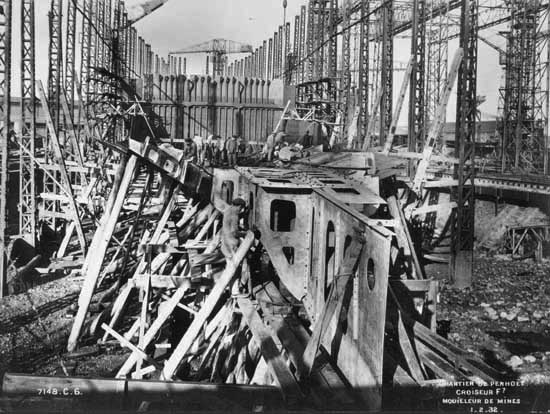
Bertin in Construction – Fonds POSTAM I1
On the same level, further back, junior officers also had their own bedroom but shared a bathroom and a toilet. They also had a square on the back of the building (just in front of a gas bunker). On these two decks, forward, were the crew quarters in which up to 86 sailors and quartermasters slept in hammocks that had to be put away during the day to set up the tables for meals.
Bertin also served as a test gallop for the famous next class, La Galissonnière.
Blueprints:
Protection
Emile Bertin was hardly armored. Only the bridge and the conning tower received 20 mm (0.8 in) plating. On the other hand, Bertin was compartmentalized into 14 areas enclosed by bulkheads. Thus, a projectile could cross it from side to side without causing her to sink. Her armored deck was 25mm thick (1 in) and her ammunition bunkers were the thickest at 30 mm (1.2 in). She was still of the “tin clad” era on that point, although post-London cruisers tended to be better protected in general.
Powerplant
Her hull was well studied in a test pool to give it an advantage of speed and fuel economy. As such, she was a very good walker, but also particularly fast, reaching 38-39 knots on her August 4, 1934 official trials but 40.2 on yard trials (the rival Italian rivals of the Bande Nere class on their side claimed 41-42 knots). Despite her 34 knots indicated her powerplant proved more than capable of delovering more output, so that she could reach on trials a record-breaking 40.2 knots based on 137,908 hp making her was the fastest French cruiser ever built.
The propulsion machinery occupied 3 compartments which enclosed 6 Penhoët boilers and 2 compartments in which were distributed 4 Parsons turbines with gears driving 4 propellers and developing a total power of 102,000 horsepower. This machinery was naturally placed in the center of the ship to ensure a good trim to the ship. The fuel and the water tanks were at the level of the last deck to limit the list as much as possible in the event of heavy seas.
However, sailing at high speed in rough seas under loaded conditions was not ideal to reach these speeds, and even dangerous due to the general lightness of construction, imposing strenghtening after her entry into service to allow broadsides.

Bertin in 1942, interned in Martinique
Armament
Lightly built (the hull was even reinforced to allow firing simultaneous broadsides), she was especially the first to use triple 152 mm guns (6 in) gun turrets, in order to save armor and weight in general. In this way she managed to have nine of them, one more than the larger Duguay Trouin ten years prior. Between the time she was designed in 1930 and 1940, her AA armament, both in quality and numbers appeared completely inadequate. Emile Bertin took on this full advantage of her US refit and modernization.
Main:
The heavy armament consisted of nice 6-inches or 152 mm model M1930, which launched projectiles of 54.17 kg in a radius of 26.474 km. These 9 guns were spread over 3 triple turrets (2 forward, one aft). These triple turrets, new in French design, were electro-hydraulic, the maximum elevation was 45°. These were the first to use use cased ammunition, and the guns were in individual cradles, with electric training and elevation, but hydraulic drive for traverse. It was an ambitious programme as these were designed to load at any angle, provided with triple-hoist systems:
1- for surface projectiles
2- for AA fire
3- for exercise cartridges and starshells
In theory they could quickly convert between the different shell types, but the reality was a source of jamming. The very optimistic initial Rate of fire could not be maintained. It a further degraded by the low train and elevation rates due to the inadequate electric motor. Completely inadequate for AA fire, this function was dropped entirely on the La Galissonière class, but Emile Bertin acted as testbed ship. It was also initially planned for the De Grasse and Richelieu Classes.
Range was 28,950 yards (26,474 m) with HE and 26,465 yards (24,200 m) with AP shells, and ROF was (except Gloire) 4-5 rounds per minute. In AA role, the ceiling at 80° was about 46,000 feet (14,000 m). After the 1943 refit in the US, she was given specially manufactured US shells. All 145 she carried aboard were of the AP type with extended charge, reaching 29,480 yards (26,960 m), so better than the original French ordnance. More
Secondary:
The anti-aircraft armament consisted of six 90 mm AA guns, grouped entirely aft of the ship around the after deck shelter. These are using an autofretted barrel and a semi-automatic Schneider breech mechanism. Designed from 1926, they entered service in 1931, also on the Suffren and La Galissonière class, as well as Jean Bart while in Casablanca. Loading above 60° proves difficult, and the rate of fire at best is bewteen 12 to 15 rounds/minute, firing 20.96 lbs. (9.51 kg) HE shells at 2,789 fps (850 mps) up to 16,885 yards (15,440 m) or 34,800 feet (10,600 m) ceiling.
Émile Bertin had onkt 250 rounds on board, a supply of just 20 rounds per minute for all four guns. Two more would be added later in 1943, but the supply remained meagre.
More
AA armament:
The weak point of the Emile Bertin was well and truly the anti-aircraft defense. It conssisted intially of eight 37 mm AA guns and six 13 mm AA machine guns. They were located on the forecastle next to the bridge structure.
The 37 mm developed in 1933 were hand-loaded and semi-automatic, but with relatively low rate of fire and so not considered very potent. During refits in the USA they were replaced advantageously by the 40 mm Bofors in quad mounts (see later). They had a practical ROF of 15-21 rpm, sending a 6.2 lbs. (2.8 kg) HE Model 1925 or Incendiary Model 1924 at 2,657 fps (810 mps) to 5,470 yards (5,000 m) effective. More
The 13.2 mm (0.5″) Hotchkiss Model 1929 was the early close range weapon, generally in twin mounts. They could fire at 45 degrees to 7,850 yards (7,200 m) and had an AA Ceiling of 13,780 feet (4,200 m), and a practical ROF of 200-250 rpm.
It needed four operators, were relatively quick to operate but still lacked a potent shell to damage fast, modern aicrafts of the 1940s. They proved in 1940 inneffecient against modern torpedo-bomber or high-level bombers. They were replaced by 20 mm Oerlikons at the first occasion. The IJN both adopted it and the derived 25 mm as their standard light AA guns.
Torpedoes:
The ship also had six 550 mm torpedo tubes and could carry 200 mines. The former were two triple banks located on deck, abaft the catapult. Likelmy the 1925 55 cm (21.65″) 23DT type, built by Toulon arsenal. They were propelled to 9,840 yards (9,000 m)/39 knots or 14,200 yards (13,000 m)/35 knots by and Schneider alcohol/air heater four-cylinder radial engine, with a 683 lbs. (310 kg) TNT warhead. The mines were never carried and the wole system of rails was removed in 1943 as the torpedo tubes.
Onboard aviation
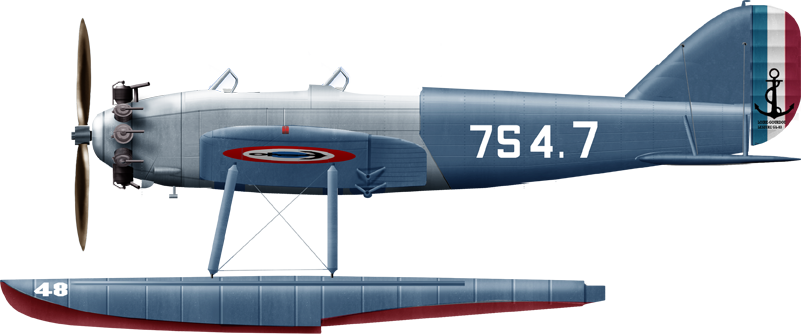
Author’s Profile of the Loire Gourdou-Leseure GL-83
On the main superstructure deck, a catapult was installed allowing the launch of a GL.832 model seaplane. On return, the latter landed on a patch of even sea created by the manoeuvering cruiser, before being recovered on board with the crane. This was only possible in moderate sea and the military value of these models, already obsolete when in service, was not high; both in speed and range. During navigation this seaplane was stowed in a hangar between the two funnels for maintenance.
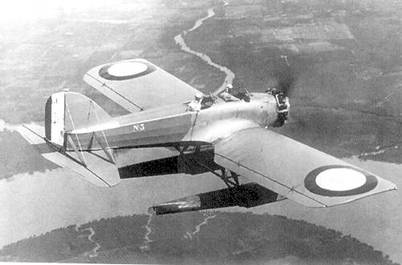
Wartime Modifications
Before 1939, in order to reinforce her AA, 2 twin 90 mm guns were added on the main deck amidships, close to the torpedo tubes. Still, need for better anti-aircraft defense urged the freeing of extra deck space on the deck. The seaplanes were withdrawn in WW2 as the catapult and hangar. In 1942 after her US refit, Emile Bertin was given four quad 40 mm AA mounts installed, two in the port and starboard wings of the bridge, two behind the funnel. Also twenty single 20mm were added around the bridge amidships, and on the stern. French AA guns were all removed for standardization.
The ship was also equipped with a radar and an asdic, and shoukd have been equipped with depht charges, but it’s not 100% sure.
Specifications
Displacement: 5,880 t. standard – 8,840 t. Full Load
Dimensions: 177 m long, 16 m wide, 6.6 m draft.
Propulsion: 4 propellers, 4 Parsons turbines, 6 penhöet boilers, 102,000 hp. Maximum operational speed 34 knots.
Propulsion: 20 mm belt, 18 mm anti-torpedo partitions, bridge 20, 26 mm turrets, 26 mm blockhouse.
Armament: 9 pieces of 152 mm cal.55 (3×3 – 1930 model), 4×90 mm AA, 8x37mm AA (4×2), 8×13,2 mm AA (4×2), 2 Loire 130 seaplanes.
Crew: 550

Emile Bertin in martinique, late 1942.
Emile Bertin in operations:


Prewar service in the Atlantic fleet: Homeport Brest, with Jeanne d’Arc and the battleship Lorraine
After her acceptance, and prior to the declaration of war, Emile Bertin sailed in the Atlantic as the flagship of a flotilla of twelve destroyers. Little is know about her prewar carrer, but it spanned fived years, where she is soon sent from the Atlantic fleet to the Mediterranean fleet. She was under command of Captain Gabriel Auphan in 1936 and Captain Jean Odend’hal in 1937.
By September 1939 Emile Bertin was employed on a secret mission to transport gold from the Bank of Poland from Beirut to Toulon. In April 1940, she operated with the British Home Fleet and took part in the Norwegian campaign. She is departing with a brigade on 17 troopships escorted by Emile Bertin, leading the destroyers Bison, Tartu, Chevalier Paul, Maillé-Brézé, Milan, Épervier, three torpedo boats and four AMCs.

Bertin underway in 1940, note the tricolor bands on the turrets
She is covering Maurice Force, making the initial French landings at Namsos at dusk on 14 April. The whole force was ashore on 17 April and on 21 April, the 146 Brigade secured the road to Steinkjer and Namdalseid, engaged by German troops in the vicinity of Vist. But the Luftwaffe is also well present off Namsos. Emile Bertin is attacked and badly damaged by a Stuka bomb, also showing her poor AA was not sufficient for the task at head. The AP-capped bomb pierced her aft deck without exploding but caused the compartment to be flooded, oil lost but her ASW compartimentation saved her. She is soon evacuated to safety, replaced by Montcalm and will come back for the evacuations in May. During the campaign, the fleet also lost the destroyer Bison and a submarine.
In May 1940, as the invasion started, she patrolled the coast but could do little to help the ground effort. In between, she received order to evacuate the remainder of the Banque de France gold reserves, previously evacuated. 286 tons of fine gold were eventually loaded in Brest on June 10, 1940 (it was time !), to be carried to safety in Halifax. She was chosen at the time as the fastest French cruiser, in the hope nothing could catch her, while the bulk of the French Fleet was on war foot in the Mediterranean. Indeed Italy declared war the same day she departed. She arrived without incident on June 18, 1940.

Bertin underway, aft view (USN)
However in Halifax, the British prepared to have her interned,long before Operation Catapult. Captain Battet had orders not to have anyone taking control of his ship, and to reach Martinique,in the French Carribean. There, she was watched by heavy cruiser HMS Devonshire as she arrived in reached Fort-de-France, still with her geavy load of gold on the 24th. The gold was stored at Fort Desaix, until the end of the war. Emile Bertin stayed afterwards in Fort-de-France Bay, together with the aircraft carrier Béarn, loaded with 106 planes, and the school cruiser Jeanne d’Arc.
Internment (June 1940-July 1943)
The three ships remained in this neutral area following the armisice signed in June 22, 1940. When on July 3, 1940 was launched Operation Catapult order was given to the British Admiralty to sail there and sink the two cruisers and aircraft carrier. This was canceled by a personal intervention of US President Franklin D. Roosevelt, literrally at the last minute. This episode is not well known, but a deal was struck that would free the Royal Navy for keeping a watch there: The USN would replace them into enfording strict neutrality of this fleet and prevent any departure.
Between the presence of this massive gold reserved and the three ships motivated a blockade of the island by British, and later relieved by US ships and so Émile Bertin remained totally inactive for the remainder of 1940, but also the whole year of 1941 and 1942. The only exception was again, obtained by permission to proceed to two exercises. On May 16, 1942, pressure of the US had her initiating a disarmament. It was planned to remove for a start of all breech blocks mechanisms, like in Alexandria in the past, moved to a guarded locker.
Operation Torch saw the invasion and occupation of the so called “free zone” in southern France, nominally under supervision of the Vichy Govrnment. Faithful to the oath of Darlan, the fleet was scuttled in Toulon. The French interned squadron of the West Indies waited a decision by Admiral Robert, a hard-line Petainist. Even after the swap to the allies by Admiral Darlan, he chosed to stay neutral, with implicit support of the US.
Robert was also de facto the high commissory of Vichy, governor of Martinique. A hatred figure, his harsh application of Vichy policies, cracking down on any dissent and ban everything, had the local population verged on rebellion. When the US enters the war, a total allied blocus of the Island is declared, imports ceased and in March 1943, there is widespread famine. By June 1943, nearby Guyane and Guadeloupe joined Free France and pressure amounts. Two army officers, Ranvoisé and Tourtet with nine companies, mutinies and march on the Governor’s villa. Admiral Robert managed to gather a marine company and armed sailors and almost starts a shootout, but is advised to take refuge on Emile Bertin, negotiating there with the Americans for a “change of authority”. On July 14, after tough negotiations with Washington, Henri Hoppenot, sent by De Gaulle, is appointed and the island joins Free France. Robert is later arrested, thrown in prison and judged by the High Court of Justice of Versailles in March 1947.
Modernization in the US and return in operations
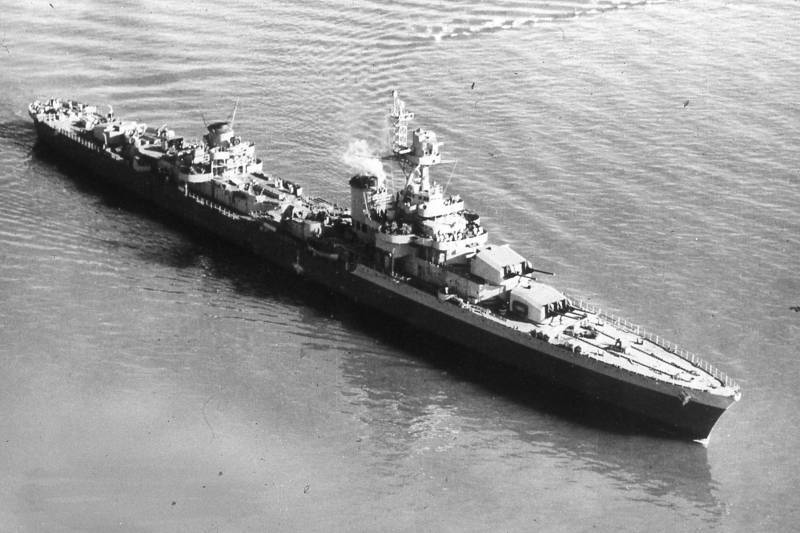
The Bertin in 1944. Note his equipment revised to US standards and the standard camouflage of that time. U.S. Navy’s recognition slide. (cc)
At last the fleet is now free to return into operation on the allies side, but it would not be easy.
Émile Bertin indeed had not been drydocked and in these warm waters, needs some serious hull cleaning. She is sent to Philadelphia to proceed to a drydocking and between September and November 1943, she is also thoroughly modernized. Her original light AA is disposed of, replaced by modern 40 and 20 mm AA guns (Four quadruple 40 mm mounts, and twenty single Oerlikon), new shells compatible to her main guns are provided, and she receives a new lattice mast, with a modern US pattern aerial and navigation radar, plus a modern sonar.
Both the catapult, minelaying installations and torpedo tubes are also unloaded to keep her stability and free space. Two additional twin 90 mm turrets are also added. With her AA beefed up she is ready for service and after a shakedown cruise in the Cheseapeake Bay, she is sent to the Mediterranean for her first mission.
Mediterranean Operations
Emile Bertin joins the Mediterranean Allied fleet, and after some training takes part in naval support operations for the landings in Italy, not the Salerno landings apparently (Operation Avalanche) on 11 September 1943 but she was involved in shore bombardments and close support operations fot eh Anzio landings (Operation Shingle) on 19–24 February 1944.
The landings in Provence (Operation Anvil Dragoon): She is committed to shore bombardments operations in support on German defenses on the Italian Riviera. Captain Paul Ortoli is in command at the time, since July 1944 (and until November 1944).
Postwar Operations

In Toulon postwar wth the destroyer Albatros (USN)
After the war, Emile Bertin is sent from Toulon, after some upkeep, to Indochina, where she arrives via Suez in October 1945. There, she is committed to various operations, and notably the Tonkin landings. She hosts an important meeting on board between Admiral Thierry d’Argenlieu, the C-in-C and representative of French military authorities in Indochina, an Ho Chi Minh, on March 24, 1946. No agreement is struck. Soon after the situation degenerates and ends with the tragic bombardment of Haiphong by D’Argenlieu. This creates a stir in Paris. D’Argenlieu is sacked and recalled to Paris, replaced by famous general Philippe Leclerc de Hauteclocque (the “French Patton”). Emile Bertin is back with D’Argenlieu in Toulon by July, and returns with Leclerc, but the latter dies not long after arrival. By December 4, 1947 the cruiser returns to France with his ashes for national funerals. He rests in the Paris Military Pantheon.
After that, there was no further missions for the cruiser, which is moored at Toulon and used as a training vessel. Attached to the 3rd region (Toulon), iÉmile BERTIN is assigned to the gunnery schools in Toulon. Then she is used as a floating barracks and a target, before being decommissioned in 1952, and sold for BU in 1959.
3D Renditions
Read More/Src
Books
Henri Le Masson, Navies of the Second World War The French Navy, vol. 1, Londres, Macdonald&Co Publishers Ltd, 1969
LV Jean-Michel Roche : Dictionnaire des bâtiments de la flotte de guerre française de Colbert à nos jours, tome II (2005)
Jean Lassaque, Le Croiseur Émile Bertin 1933-1959, Marines éditions, 2004
Richard Seiler, « L’histoire mouvementée de l’Émile Bertin, croiseur rapide de la marine française 1939-1946 », in 39-45, no 186, janvier 2002
Tibéry, Denis Lefebvre et Jean-Pierre Pécau : L’Or de France (tome 1, « La croisière de l’Émile Bertin » Le Lombard, 2011 et 2012.
Armand Nicolas, Histoire de La Martinique, tome 3 : De 1939 à 1971
Jean Meyer et Martine Acerra, Histoire de la marine française : des origines à nos jours, Rennes, Ouest-France, 1994
Michel Vergé-Franceschi (dir.), Dictionnaire d’Histoire maritime, Paris, éditions Robert Laffont, coll. « Bouquins », 2002
Alain Boulaire, La Marine française : De la Royale de Richelieu aux missions d’aujourd’hui, Quimper, éditions Palantines, 2011
Rémi Monaque, Une histoire de la marine de guerre française, Paris, éditions Perrin, 2016
Draper, Alfred (1979). Operation Fish: The Race to Save Europe’s Wealth 1939-1945. London: Cassel.
Jordan, John (1996). “Emile Bertin: Fast Minelaying Cruiser”. In McLean, David & Preston, Antony (eds.). Warship 1996.
Jordan, John & Moulin, Jean (2013). French Cruisers 1922–1956. Barnsley, UK: Seaforth Publishing.
Whitley, M. J. (1995). Cruisers of World War Two: An International Encyclopedia. London: Cassell.
David Miller (2001) The Illustrated Directory of Warships: From 1860 to the Present, Salamander Books,
Jean Lassaque (2004) Le croiseur Emile Bertin 1933-1959, Marines éditions
René Auque, Paul Carré ‘Le croiseur Emile Bertin. De la mer du Nord aux Caraïbes (1940-1943)’
Links
wikipedia fr
On xavier.gallenne.free.fr
Detailed original plans on 3dhistory.de by Thomas Schmitt
On envelopmer.blogspot.com (FR)
Operation Fish, the race to save Europe’s wealth
anciens-cols-bleus.net/ forum
Model Kit
There are practically no known model kit of the Emile Bertin but one made by HP model in 1/700 waterline serie.
See also:
on modellmarine.de
Discussion on shipmodels.info
On scalemates.com

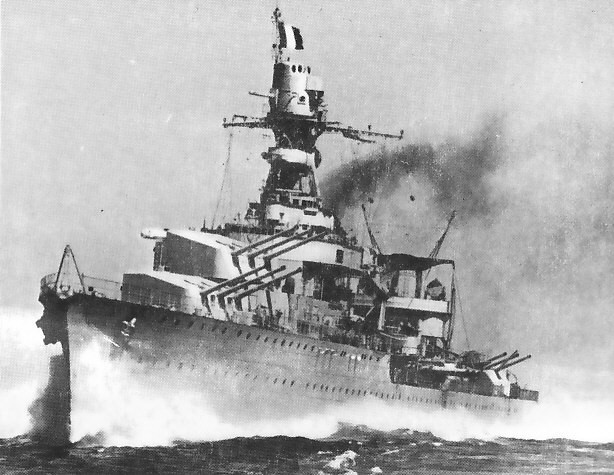
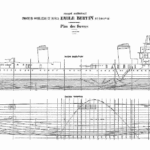
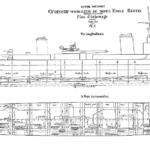
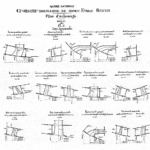
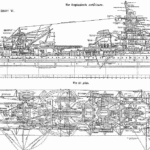

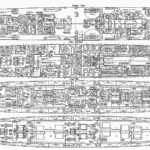
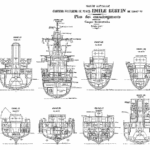

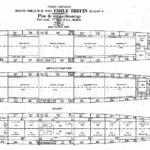
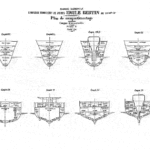
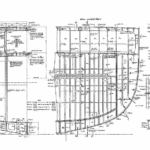
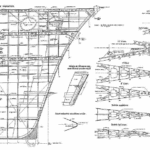
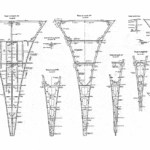
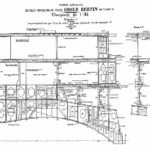
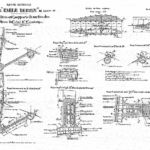
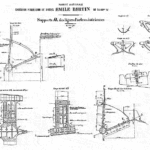
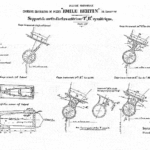
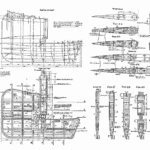
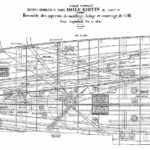
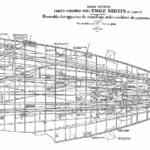
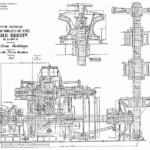
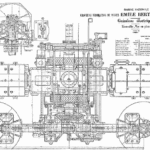

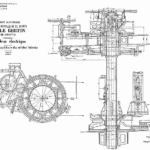
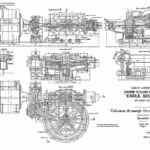
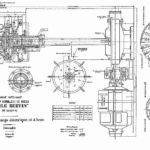
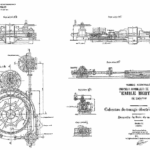
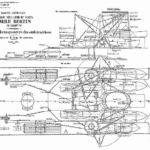
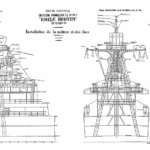

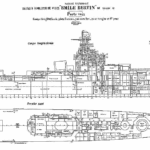
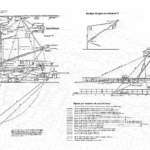
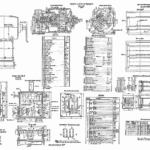
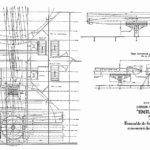
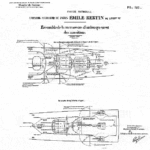
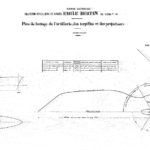


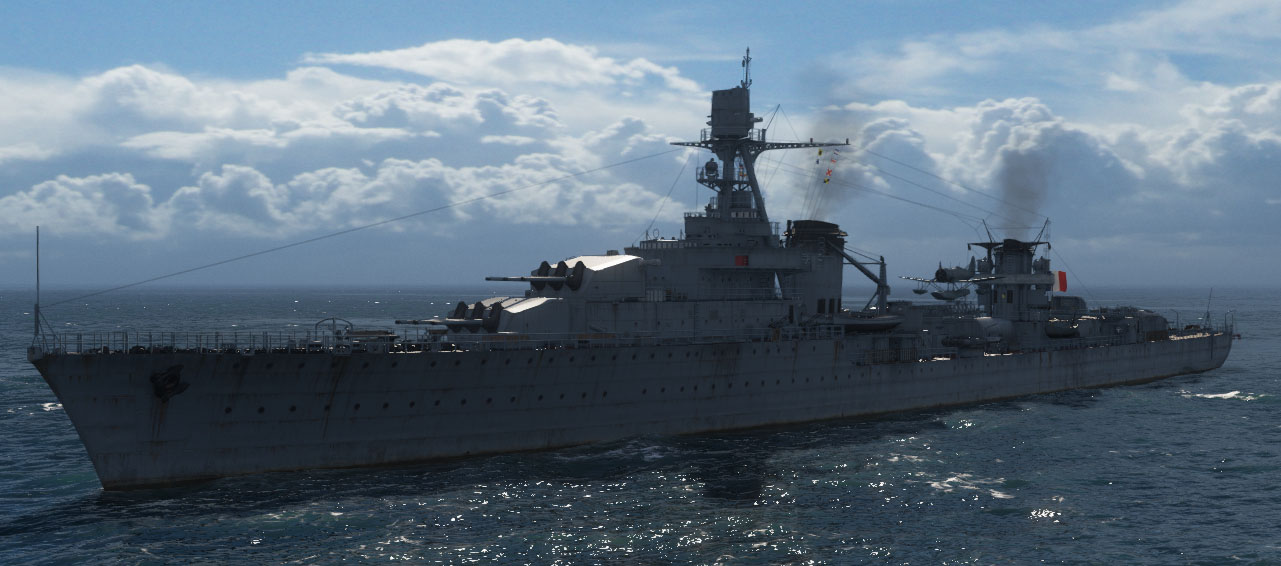
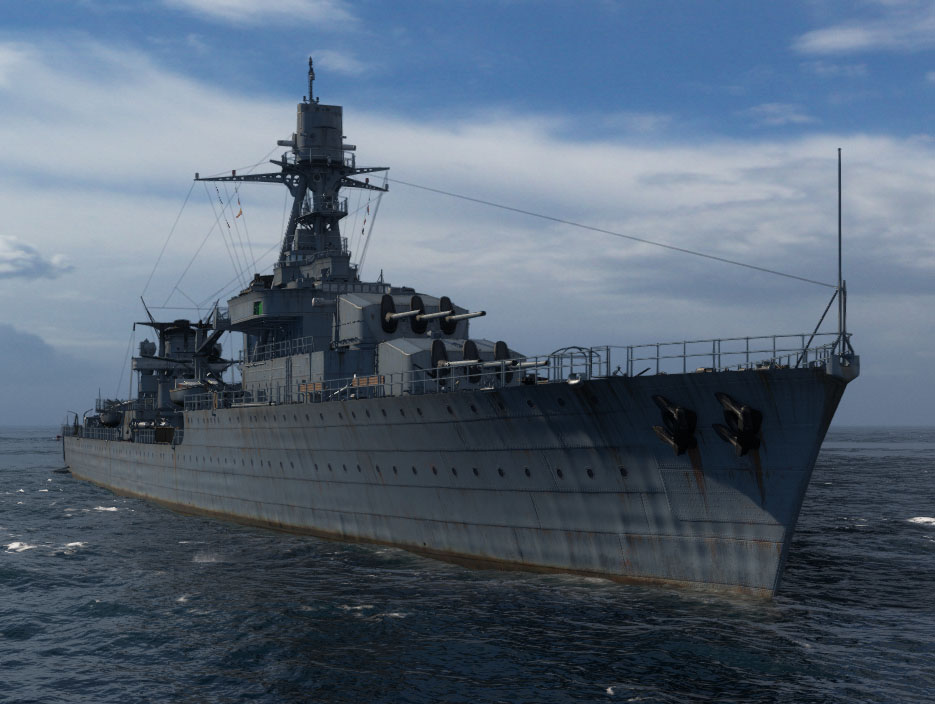
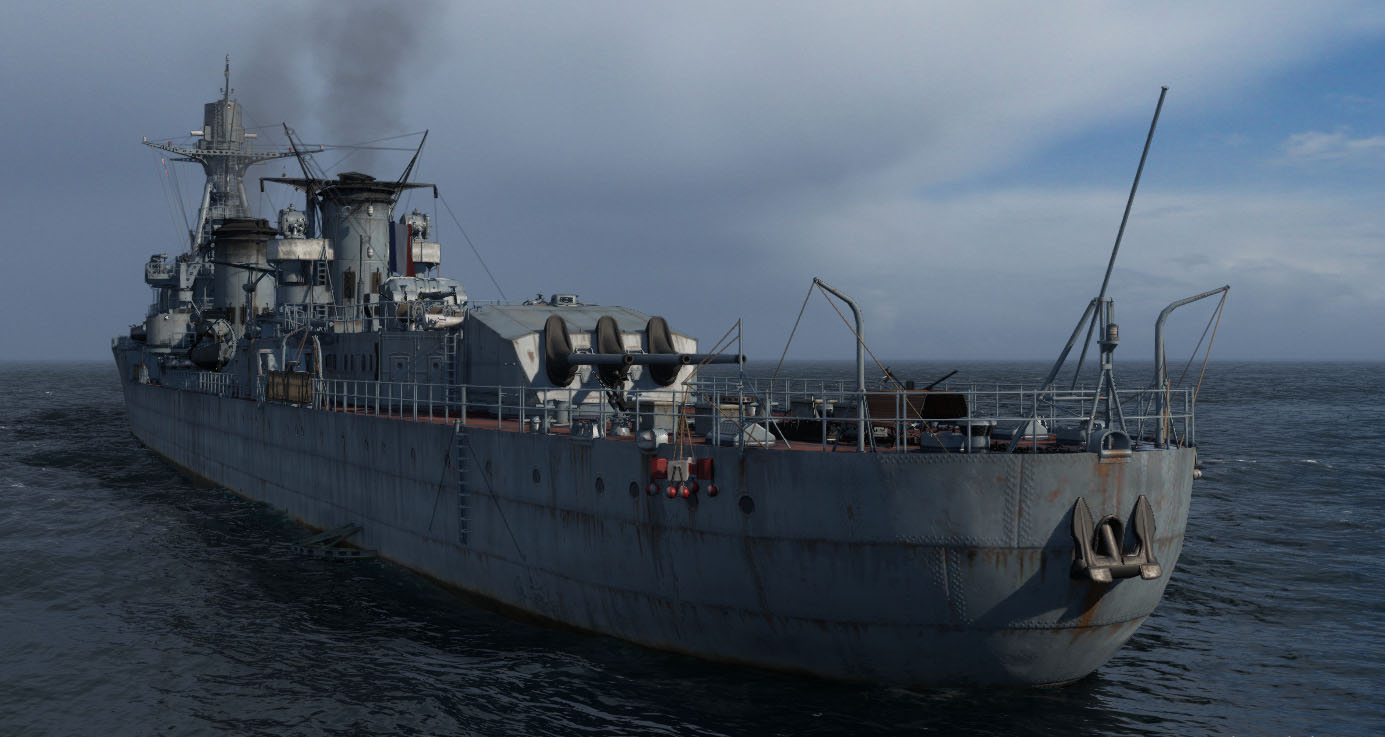
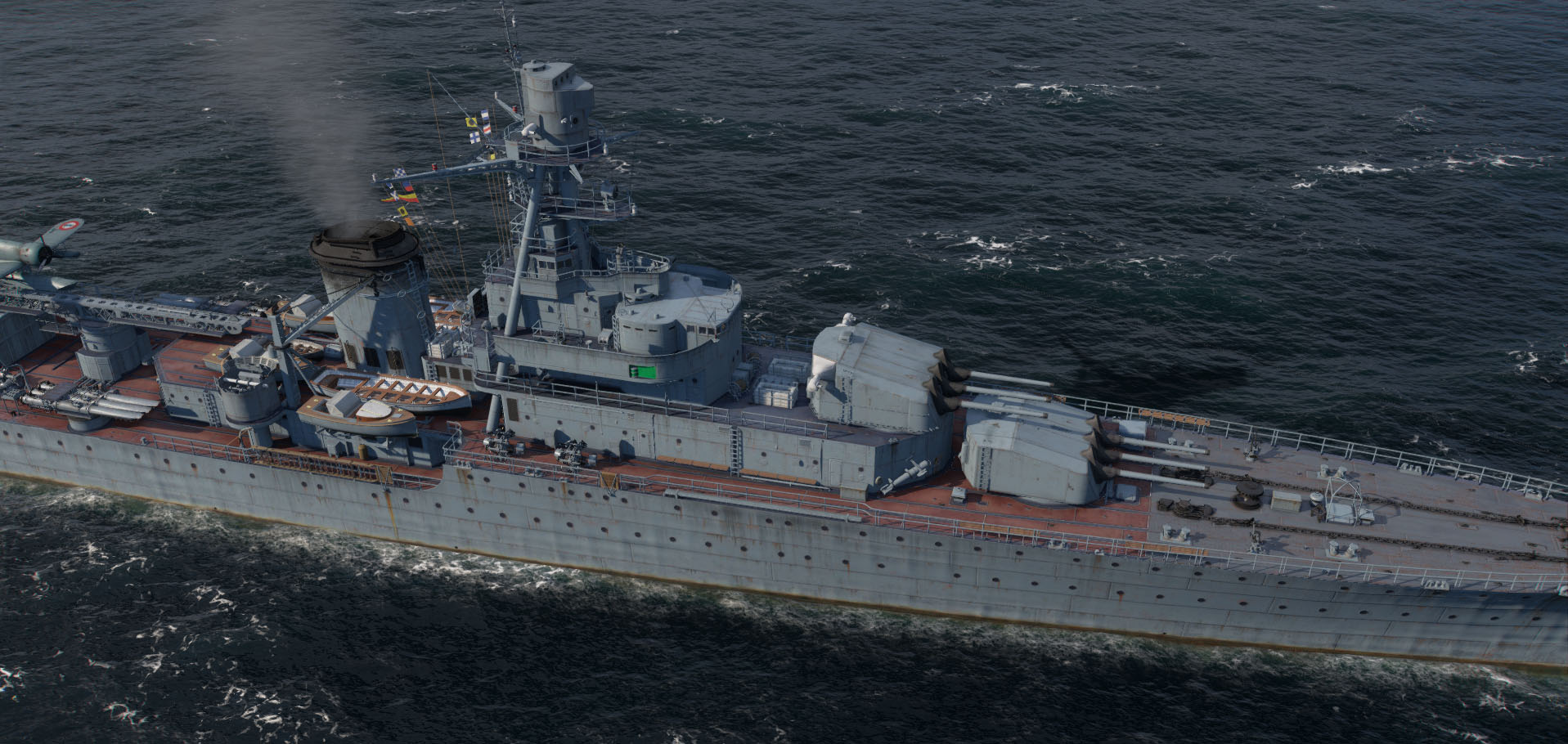
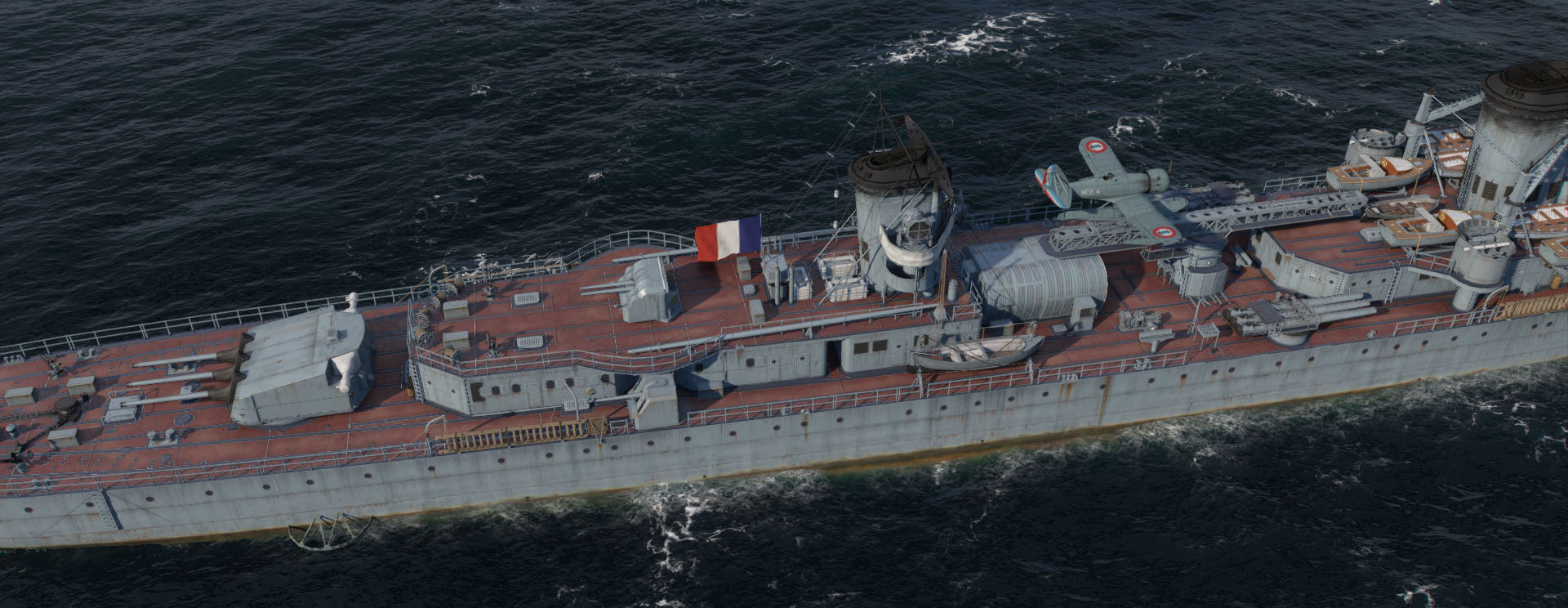
 Latest Facebook Entry -
Latest Facebook Entry -  X(Tweeter) Naval Encyclopedia's deck archive
X(Tweeter) Naval Encyclopedia's deck archive Instagram (@navalencyc)
Instagram (@navalencyc)





 French Navy
French Navy Royal Navy
Royal Navy Russian Navy
Russian Navy Armada Espanola
Armada Espanola Austrian Navy
Austrian Navy K.u.K. Kriegsmarine
K.u.K. Kriegsmarine Dansk Marine
Dansk Marine Nautiko Hellenon
Nautiko Hellenon Koninklije Marine 1870
Koninklije Marine 1870 Marinha do Brasil
Marinha do Brasil Osmanlı Donanması
Osmanlı Donanması Marina Do Peru
Marina Do Peru Marinha do Portugal
Marinha do Portugal Regia Marina 1870
Regia Marina 1870 Nihhon Kaigun 1870
Nihhon Kaigun 1870 Preußische Marine 1870
Preußische Marine 1870 Russkiy Flot 1870
Russkiy Flot 1870 Svenska marinen
Svenska marinen Søværnet
Søværnet Union Navy
Union Navy Confederate Navy
Confederate Navy Armada de Argentina
Armada de Argentina Imperial Chinese Navy
Imperial Chinese Navy Marinha do Portugal
Marinha do Portugal Mexico
Mexico Kaiserliche Marine
Kaiserliche Marine 1898 US Navy
1898 US Navy Sovietskiy Flot
Sovietskiy Flot Royal Canadian Navy
Royal Canadian Navy Royal Australian Navy
Royal Australian Navy RNZN Fleet
RNZN Fleet Chinese Navy 1937
Chinese Navy 1937 Kriegsmarine
Kriegsmarine Chilean Navy
Chilean Navy Danish Navy
Danish Navy Finnish Navy
Finnish Navy Hellenic Navy
Hellenic Navy Polish Navy
Polish Navy Romanian Navy
Romanian Navy Turkish Navy
Turkish Navy Royal Yugoslav Navy
Royal Yugoslav Navy Royal Thai Navy
Royal Thai Navy Minor Navies
Minor Navies Albania
Albania Austria
Austria Belgium
Belgium Columbia
Columbia Costa Rica
Costa Rica Cuba
Cuba Czechoslovakia
Czechoslovakia Dominican Republic
Dominican Republic Haiti
Haiti Hungary
Hungary Honduras
Honduras Estonia
Estonia Iceland
Iceland Eire
Eire Equador
Equador Iran
Iran Iraq
Iraq Latvia
Latvia Liberia
Liberia Lithuania
Lithuania Mandchukuo
Mandchukuo Morocco
Morocco Nicaragua
Nicaragua Persia
Persia San Salvador
San Salvador Sarawak
Sarawak Uruguay
Uruguay Venezuela
Venezuela Zanzibar
Zanzibar Warsaw Pact Navies
Warsaw Pact Navies Bulgaria
Bulgaria Hungary
Hungary

 Bundesmarine
Bundesmarine Dutch Navy
Dutch Navy Hellenic Navy
Hellenic Navy Marina Militare
Marina Militare Yugoslav Navy
Yugoslav Navy Chinese Navy
Chinese Navy Indian Navy
Indian Navy Indonesian Navy
Indonesian Navy JMSDF
JMSDF North Korean Navy
North Korean Navy Pakistani Navy
Pakistani Navy Philippines Navy
Philippines Navy ROKN
ROKN Rep. of Singapore Navy
Rep. of Singapore Navy Taiwanese Navy
Taiwanese Navy IDF Navy
IDF Navy Saudi Navy
Saudi Navy Royal New Zealand Navy
Royal New Zealand Navy Egyptian Navy
Egyptian Navy South African Navy
South African Navy






























 Ukrainian Navy
Ukrainian Navy dbodesign
dbodesign